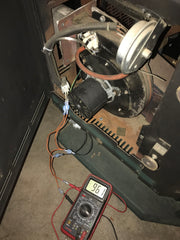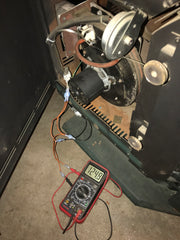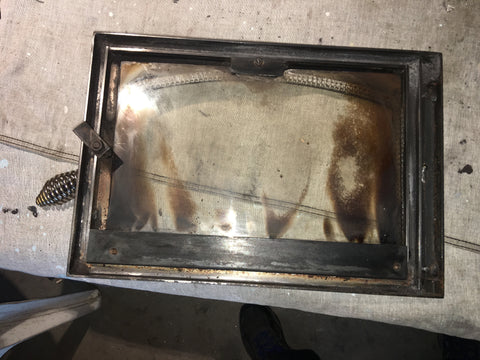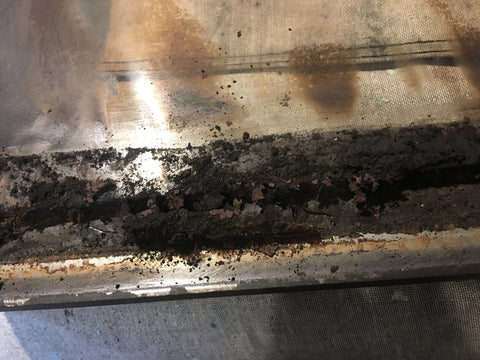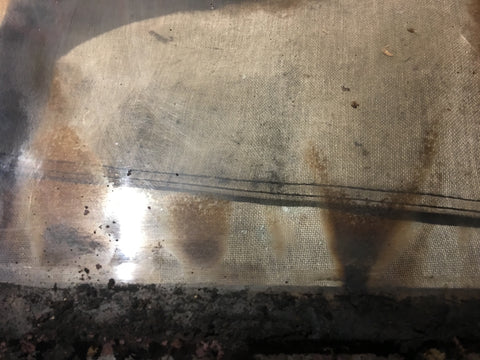When your pellet stove shuts down, there is an abnormal noise, or isn't feeding pellets, it is easy to isolate the problem by making an AC Line Test Cord to plug each part into the wall. All the components can be bought at the local hardware store or online. Follow these simple steps to build the AC Line Test Cord to and test your pellet stove Combustion Exhaust Blower, Convection/ Room Blower, Auger Motors, or Igniter for normal operation.
1. Purchase a line cord similar to the one pictured below at Home Depot or your local hardware store.

2. Then purchase the appropriate crimp on quick disconnects/ spade lugs shown below. If the quick disconnects on the wires of your exhaust blower, convection blower, igniter, or auger motor are male, then you need to purchase female clips for your AC Cord Tester. If the quick disconnects on the pellet stove part you are testing are female, you need to purchase male clips. Most igniters have male quick disconnects and need female clips. Some Napoleon igniters have female clips on the ends of the wires, so you need to purchase male clips. We recommend insulated quick disconnects that can be purchased though the online retailer Newark. See link below.
Recommended female quick disconnect clips: Part # 3-520408-2. Description: Quick Disconnect Terminal, Ultra-Fast Plus FASTON 250 Series, Female Quick Disconnect.
https://www.newark.com/amp-te-connectivity/3-520408-2/terminal-female-disconnect-6-35mm/dp/90F3754?MER=sy-me-pd-mi-alte

Recommended male quick disconnect clips: Part # 3-520107-2. Description: Quick Disconnect Terminal, Ultra-Fast FASTON 250 Series, Male Quick Disconnect, 6.35mm x 0.81mm. It may also be possible to purchase these at Home Depot. See link below.
https://www.newark.com/amp-te-connectivity/3-520107-2/terminal-male-disconnect-6-35mm/dp/90F3725?st=amp%20-%20te%20connectivity%C2%A0%203-520107-2%C2%A0%20quick%20disconnect%20terminal,%20ultra-fast%20faston%20250%20series,%20male%20quick%20disconnect,%206.35mm%20x%200.81mm

Most stoves use just the black and white wires of the AC Line Cord to test exhaust blowers, convection blowers, auger motors, or igniters, and you would attach the quick connects to just those. On all Harman stoves, a male quick disconnect is needed for the green ground wire on an exhaust/ combustion blower or convection/ room/ distribution blower, so you would use all three wires on the AC Line Cord and three males clips to test the blowers. For harman igniters, use female quick disconnects on the black and white wires. The green ground wire is not needed to test those.
3. For safety, shut down the pellet stove and pull the plug out of the wall.
4. Unplug the combustion/ exhaust blower, convection/ room blower, auger motor, or igniter from the stove. Leave them mounted in the stove, but unplugged.
5. Connect combustion/ exhaust blower, convection/ room blower, auger motor, or igniter to the AC Line Cord Tester, using the quick disconnect clips.
6. Plug the AC Line Cord into the wall. For the igniter, check gets hot by looking into the burn pot to see if it turns red. For the exhaust blower and convection blowers check to see the fan blade is spinning and not making any abnormal noises. For the auger motor, check and see if it feeds pellets.
Note: It is possible to put a male and female clip on the black and white wires with butt connectors to cover all types of stove connections. Also, you may install an inline on/off switch and a 5 Amp AGC 5 fuse in an inline fuse holder on the black AC wire for protection from shortages.



























